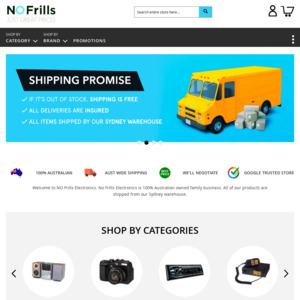SE+ $479 reduced from $599 Explorer+ $559 reduced from $699
Must activate by Monday 29th October for 2 months free. You may need to add express shipping for it to arrive in time ($10) especially in WA. The free months do not include the annual fee (see below).
https://inreach.garmin.com/promotions
There are a variety of subscription offers from $25 to $150 per month.
https://explore.garmin.com/en-AU/inreach/
The purchase price is much lower than buying overseas or anywhere else I could find in Australia even used!
Garmin allow you to buy a month at a time (with a $37 annual fee) which is different to the SPOT products.
Mini:
*Australian stock and warranty
*Weighs 100g
*50 hour battery (with 10 minute updates turned on)
*USB rechargeable
*Basic navigation feature on the device
*Send and receive custom text messages anywhere in the world and get weather updates
*Bluetooth connection to phone (which supports full navigation and satellite texting from the phone)
SE+
*Adds basic maps onscreen for navigation
*213g
Explorer+
*Adds full maps and onscreen navigation
*213g





From memory, the problem with most of these things was (still is?) that they were managed from the US. Yes, still the same. Your SOS goes to GEOS monitoring team located in the US. They then contact Australian police or search and rescue. Still not ideal. S&R communicate with you via GEOS and vice versa. There is no real time or direct communication between the person who needs help and the rescuer. Lots of room for error considering two different nations with two different systems, even our language isn't quite the same (cookies, biscuits, fanny, rooting - all those words that have totally different meanings. US is imperial, we're metric. I believe we also use different gps data format (I think we're wgs84, US might be NAD?)which means converting gps coordinates from one system to another. If you can ignore the whole GEOS thing and rely on SOS locally, it looks awesome. The unit to unit comms via satellite is a great feature too, if it works well enough.